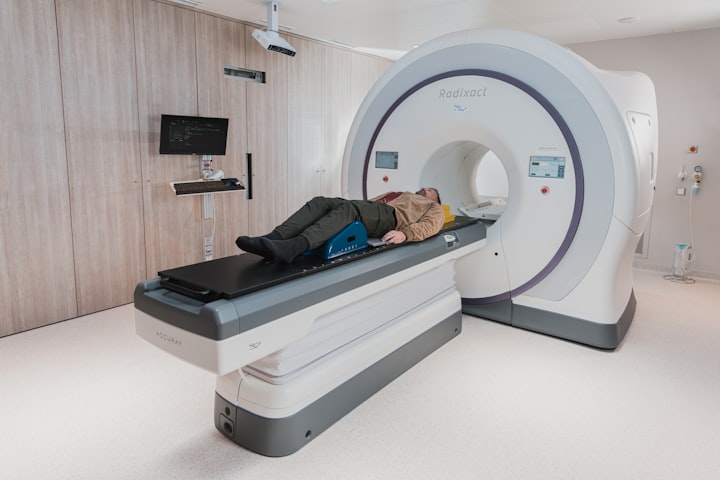5 Key Trends In CT Imaging Technology
- An Insightful Read
Computed Tomography (CT) imaging technology has revolutionized the field of medical diagnostics, enabling physicians to obtain detailed and accurate images of internal structures within the human body.
Over the years, CT imaging has undergone significant advancements, constantly pushing the boundaries of medical imaging capabilities.
In this article, we will explore five key trends that are shaping the future of CT imaging technology, enhancing diagnostic accuracy, patient safety, and overall efficiency.
Artificial Intelligence And Machine Learning
One of the most prominent trends in CT imaging technology is the integration of artificial intelligence (AI) and machine learning algorithms.
AI algorithms can analyze large volumes of CT images and assist radiologists in the detection and characterization of abnormalities with increased accuracy and efficiency.
These algorithms can rapidly process vast amounts of data, aiding in the early detection of diseases such as cancer, cardiovascular conditions, and neurological disorders.
By reducing the burden on radiologists, AI-powered CT imaging systems have the potential to expedite diagnosis and improve patient outcomes.
Low-dose CT Imaging
Radiation exposure has always been a concern in medical imaging, particularly in CT scans, which utilize X-rays to generate images.
However, advancements in CT imaging technology have focused on reducing radiation dose while maintaining image quality.
Low-dose CT techniques, such as iterative reconstruction algorithms and adaptive filtration, allow for significant reduction in radiation exposure without compromising diagnostic accuracy.
This trend not only prioritizes patient safety but also enables healthcare providers to perform repeated CT scans when necessary, monitoring treatment effectiveness and disease progression.
Dual-energy CT Imaging
Dual-energy CT imaging is another transformative trend in the field. It involves the simultaneous acquisition of CT images at two different energy levels, enabling the differentiation of various materials within the body based on their unique energy absorption characteristics.
This technology enhances the diagnostic capabilities of CT imaging by providing additional information about tissue composition, distinguishing between different types of lesions, and improving the detection of subtle abnormalities.
Dual-energy CT imaging has particularly found applications in oncology, cardiovascular imaging, and musculoskeletal imaging.
Functional And Molecular Imaging
Traditionally, CT scans have been primarily focused on anatomical imaging.
However, the integration of functional and molecular imaging into CT technology is revolutionizing the field. Functional CT techniques, such as perfusion imaging and dynamic contrast-enhanced CT, allow for the assessment of blood flow and tissue perfusion, providing valuable insights into the physiological aspects of disease processes.
Additionally, molecular CT imaging involves the use of targeted contrast agents that selectively bind to specific molecular markers, enabling the visualization and characterization of molecular processes associated with diseases.
These advancements have the potential to enhance early disease detection, treatment monitoring, and personalized medicine.
Advanced Visualization And 3D Printing
The advancements in CT imaging technology have also transformed the way medical images are visualized and utilized.
Advanced visualization techniques, such as multiplanar reconstruction, maximum intensity projection, and volume rendering, enable radiologists to create comprehensive 3D representations of anatomical structures.
These techniques facilitate a better understanding of complex anatomical relationships and aid in surgical planning, guiding interventions, and improving patient outcomes.
Furthermore, the integration of CT imaging with 3D printing technology allows for the creation of patient-specific anatomical models, which can be used for preoperative simulations, training, and patient education.
Conclusion
The five key trends discussed in this article highlight the rapid evolution of CT imaging technology, bringing about significant advancements in medical diagnostics.
Artificial intelligence and machine learning algorithms enhance the diagnostic accuracy and efficiency of radiologists, while low-dose CT imaging techniques prioritize patient safety.
Dual-energy CT imaging provides valuable insights into tissue composition, functional and molecular imaging techniques offer a deeper understanding of disease processes, and advanced visualization and 3D printing revolutionize surgical planning and patient care.
With these trends, CT imaging technology continues to shape the future of medical diagnostics, offering enhanced capabilities and improved patient outcomes.
As research and development in this field continue to thrive, we can anticipate even more exciting breakthroughs that will further refine CT imaging technology, making it an indispensable tool for healthcare professionals worldwide.
As we move forward, it is crucial to ensure the responsible and ethical implementation of these advancements, considering factors such as patient privacy, data security, and the ongoing training of healthcare professionals to effectively leverage these technologies.
By doing so, we can harness the full potential of CT imaging and usher in a new era of precision medicine and personalized patient care.
In conclusion, the five key trends in CT imaging technology - artificial intelligence and machine learning, low-dose imaging, dual-energy imaging, functional and molecular imaging, and advanced visualization and 3D printing - are transforming the field of medical diagnostics.
These advancements offer improved diagnostic accuracy, patient safety, and surgical planning, revolutionizing the way diseases are detected, monitored, and treated.
With continued research and innovation, CT imaging technology will undoubtedly play a vital role in shaping the future of healthcare, ultimately leading to better patient outcomes and a healthier society.
Discover one of Australia's leading diagnostic imaging centers that is at the forefront of utilizing advanced technologies to deliver precise and reliable results. Look no further than this exceptional center, where you can experience top-notch services within a professional and welcoming environment. Moreover, scheduling an appointment with them is incredibly convenient and hassle-free.
About the Creator
Christopher David
I am a writer, editor and an avid reader.






Comments
There are no comments for this story
Be the first to respond and start the conversation.